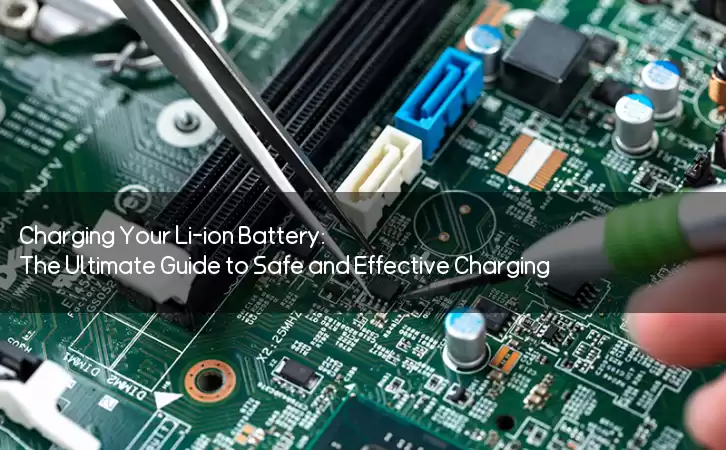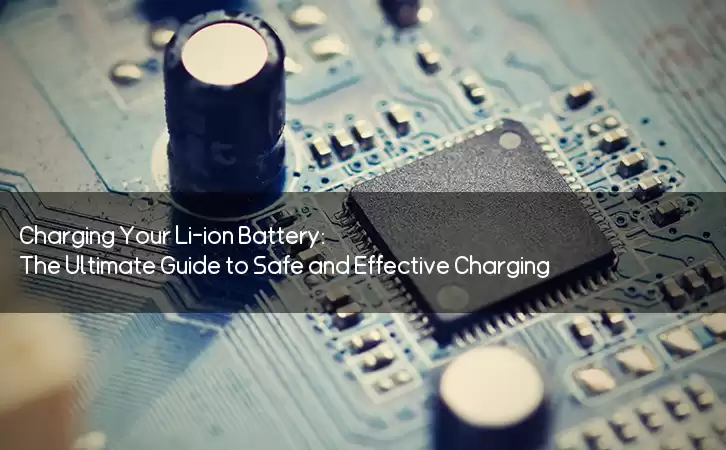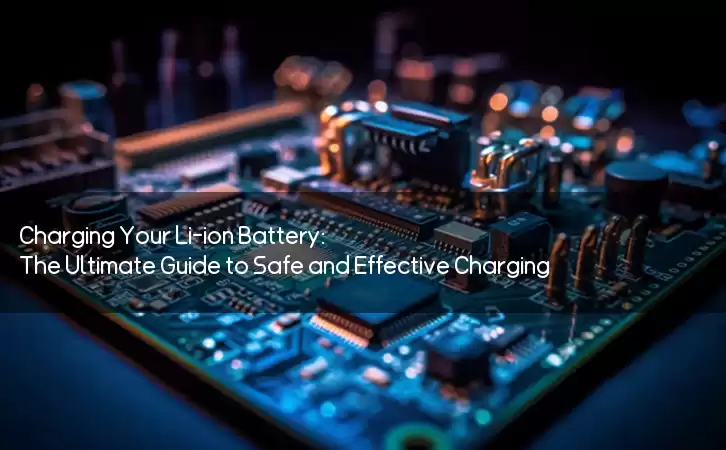Information Center
Charging Your Li-ion Battery: The Ultimate Guide to Safe and Effective Charging
Published:2023-07-31 10:31:20 Author:Green WCND Views:51Li-ion Battery Charger Instructions: A Comprehensive Guide

As electronic devices become increasingly important in our daily lives, so too does the need for reliable battery power. Lithium-ion (Li-ion) batteries have become popular due to their high charge density and longer lifespan compared to traditional rechargeable batteries. However, to ensure proper charging and prolong the lifespan of your Li-ion battery, it is important to follow the manufacturer’s charging instructions carefully. In this comprehensive guide, we will outline the key steps and tips for charging your Li-ion battery safely and effectively.

Step 1: Choose the Right Charger

The first step in charging your Li-ion battery is to ensure that you are using the appropriate charger. Different devices require different charging voltages and amperages to charge their batteries, and using the wrong charger can damage your battery or even create a fire hazard.
First and foremost, choose a charger that is specifically designed for Li-ion batteries. Avoid using chargers that are designed for other types of batteries, such as NiMH or NiCad, as they may have a different voltage curve or charging profile that is not compatible with Li-ion batteries.
Additionally, make sure that the voltage and amperage specifications on your charger match those of your device. Many Li-ion batteries have a nominal voltage of 3.7 volts, but some devices may require a higher voltage for charging. Check your device’s manual or specifications to ensure that you are using the correct charger.
Step 2: Monitor Charging Progress
Once you have plugged in your charger, it is important to monitor the charging progress to ensure that your battery is charging properly. Most Li-ion batteries have a built-in protection circuit that will stop the charging process once the battery is fully charged. However, it is still a good idea to keep an eye on the charging process to ensure that everything is working as it should.
Many chargers will have an indicator light that will turn on when the battery is charging and turn off once the battery is fully charged. If your charger does not have an indicator light, you can check the charging progress by monitoring the battery’s voltage with a multimeter. As the battery charges, the voltage will increase until it reaches its maximum charge capacity.
It is important to avoid overcharging your battery, as this can damage the battery’s cells and reduce its lifespan. If you notice that your battery is taking longer than usual to charge or if it feels excessively hot to the touch, unplug the charger and let the battery cool down before continuing.
Step 3: Proper Storage and Maintenance
Once your Li-ion battery is fully charged, remove it from the charger and store it in a cool, dry place. Avoid exposing your battery to extreme temperatures or humidity, as this can damage the battery and reduce its lifespan.
It is also important to maintain your battery properly to ensure that it remains in good condition. Li-ion batteries should be charged and discharged regularly, as leaving them fully charged or fully discharged for long periods of time can damage the battery’s cells. Additionally, avoid dropping or otherwise damaging your battery, as this can also reduce its lifespan and safety.
Conclusion
Charging your Li-ion battery properly is essential for maintaining its performance and safety. Make sure to use a charger specifically designed for Li-ion batteries, monitor the charging process, and store and maintain your battery properly. By following these simple steps, you can ensure that your Li-ion battery remains in good condition and provides reliable power for your electronic devices for years to come.
Power Adapter Design and Customization Guide for Portable Electric KettlesI. Common Design Types for Portable Electric Kettle Power AdaptersPortable electric ke···
I. Common Design Types of Power Adapters External Independent Type (Most Common) Design: A standalone adapter (e.g., "black brick") connected to the p···
Handheld Vacuum Cleaner Power Adapter Selection GuideIntroductionHandheld vacuum cleaners have become a mainstream tool for household cleaning due to their port···
Drill Power Adapter Selection Guide.drill-container { font-family: Arial, sans-serif; line-height: 1.6; max-width: 800px; margin: 0 auto; padding: 20px; } .dril···





